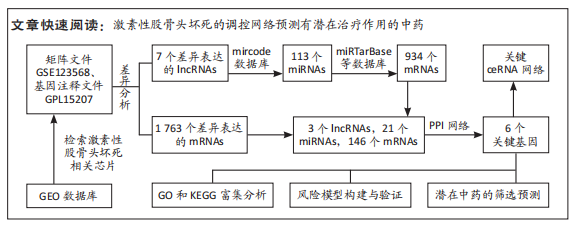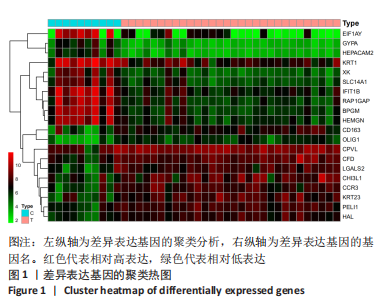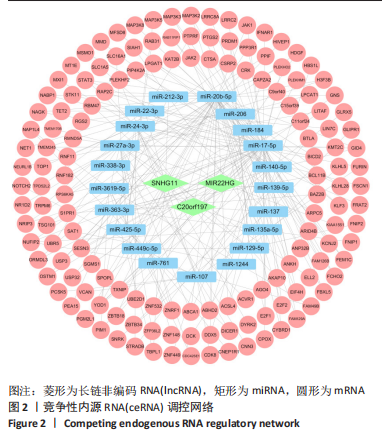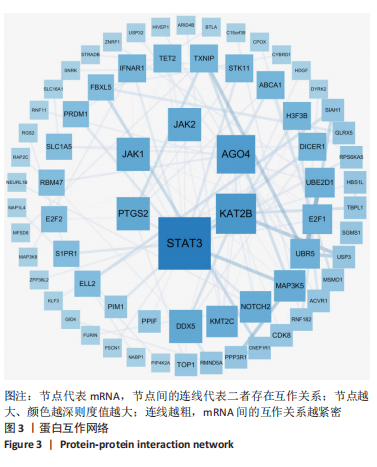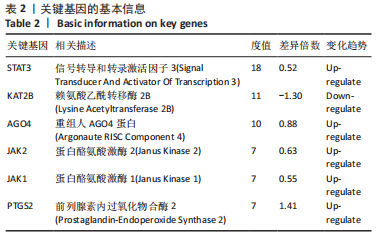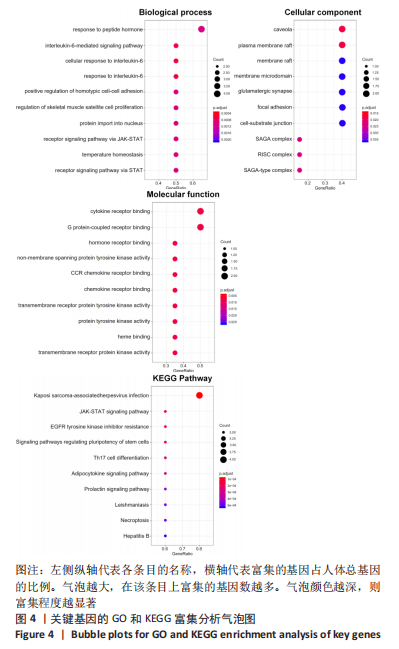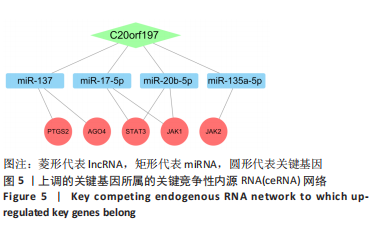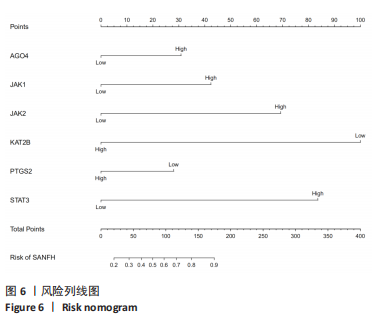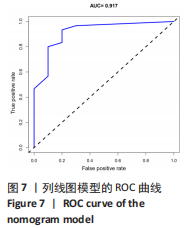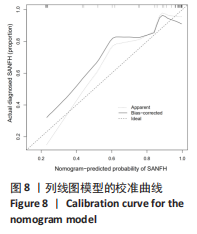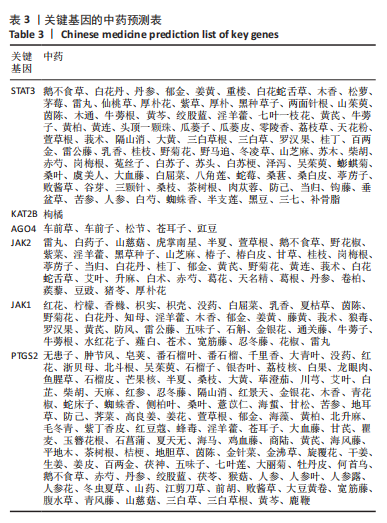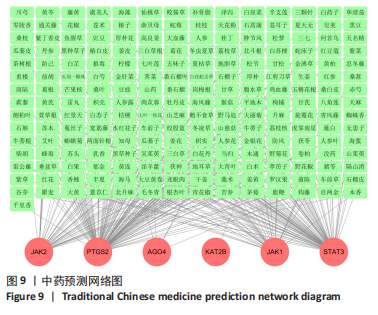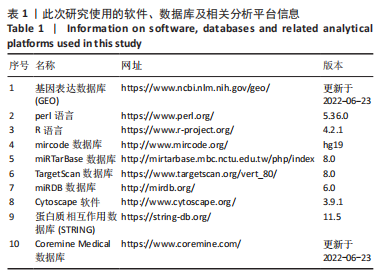[1] 唐涛,苟远涛,唐俊,等.成都地区成人股骨头坏死流行病学研究[J].中国康复理论与实践,2018,24(8):970-974.
[2] LIU F, WANG W, YANG L, et al. An epidemiological study of etiology and clinical characteristics in patients with nontraumatic osteonecrosis of the femoral head. J Res Med Sci. 2017;22:15.
[3] IKEUCHI K, HASEGAWA Y, SEKI T, et al. Epidemiology of nontraumatic osteonecrosis of the femoral head in Japan. Mod Rheumatol. 2015;25(2):278-281.
[4] WANG A, REN M, WANG J. The pathogenesis of steroid-induced osteonecrosis of the femoral head: A systematic review of the literature. Gene. 2018;671:103-109.
[5] WU X, SUN W, TQN M. Noncoding RNAs in Steroid-Induced Osteonecrosis of the Femoral Head. Biomed Res Int. 2019;2019:8140595.
[6] MEI R, CHEN D, ZHONG D, et al. Metabolic Profiling Analysis of the Effect and Mechanism of Gushiling Capsule in Rabbits With Glucocorticoid-Induced Osteonecrosis of the Femoral Head. Front Pharmacol. 2022;13:845856.
[7] BARRETT T, WILHITE SE, LEDOUX P, et al. NCBI GEO: archive for functional genomics data sets--update. Nucleic Acids Res. 2013;41(Database issue):D991-D995.
[8] JIANG J, BI Y, LIU XP, et al. To construct a ceRNA regulatory network as prognostic biomarkers for bladder cancer. J Cell Mol Med. 2020; 24(9):5375-5386.
[9] SZKLARCZYK D, GABLE AL, NASTOU KC, et al. The STRING database in 2021: customizable protein-protein networks, and functional characterization of user-uploaded gene/measurement sets. Nucleic Acids Res. 2021;49(D1):D605-D612.
[10] YU G, WANG LG, HAN Y, et al. clusterProfiler: an R package for comparing biological themes among gene clusters. OMICS. 2012;16(5):284-287.
[11] ZHOU Y, ZHANG F, XU F, et al. lncRNA NEAT1 regulates CYP1A2 and influences steroid-induced necrosis. Open Life Sci. 2021;16(1):969-980.
[12] LUO H, LAN W, LI Y, et al. Microarray analysis of long-noncoding RNAs and mRNA expression profiles in human steroid-induced avascular necrosis of the femoral head. J Cell Biochem. 2019;120(9):15800-15813.
[13] LI Z, HUANG C, YANG B, et al. Emerging roles of long non-coding RNAs in osteonecrosis of the femoral head. Am J Transl Res. 2020;12(9): 5984-5991.
[14] SEN R, PEZOA SA, CARPIO SHULL L, et al. Kat2a and Kat2b Acetyltransferase Activity Regulates Craniofacial Cartilage and Bone Differentiation in Zebrafish and Mice. J Dev Biol. 2018;6(4):27.
[15] XU Y, JIANG Y, WANG Y, et al. LINC00473-modified bone marrow mesenchymal stem cells incorporated thermosensitive PLGA hydrogel transplantation for steroid-induced osteonecrosis of femoral head: A detailed mechanistic study and validity evaluation. Bioeng Transl Med. 2021;7(2):e10275.
[16] GENG W, ZHANG W, MA J. IL-9 exhibits elevated expression in osteonecrosis of femoral head patients and promotes cartilage degradation through activation of JAK-STAT signaling in vitro. Int Immunopharmacol. 2018;60:228-234.
[17] CHEN B, LIU Y, CHENG L. IL-21 Enhances the Degradation of Cartilage Through the JAK-STAT Signaling Pathway During Osteonecrosis of Femoral Head Cartilage. Inflammation. 2018;41(2):595-605.
[18] JIN S, MENG C, HE Y, et al. Curcumin prevents osteocyte apoptosis by inhibiting M1-type macrophage polarization in mice model of glucocorticoid-associated osteonecrosis of the femoral head. J Orthop Res. 2020;38(9):2020-2030.
[19] GILLET C, DALLA VALLE A, GASPARD N, et al. Osteonecrosis of the Femoral Head: Lipotoxicity Exacerbation in MSC and Modifications of the Bone Marrow Fluid. Endocrinology. 2017;158(3):490-502.
[20] FUKUSHIMA T, HOZUMI A, TOMITA M, et al. Steroid changes adipokine concentration in the blood and bone marrow fluid. Biomed Res. 2016;37(3):215-220.
[21] DI FILIPPO L, DOGA M, RESMINI E, et al. Hyperprolactinemia and bone. Pituitary. 2020;23(3):314-321.
[22] WANG X, ZHAO D, ZHU Y, et al. Long non-coding RNA GAS5 promotes osteogenic differentiation of bone marrow mesenchymal stem cells by regulating the miR-135a-5p/FOXO1 pathway. Mol Cell Endocrinol. 2019;496:110534.
[23] LI D, AN Y. MiR-135a-5p inhibits vascular smooth muscle cells proliferation and migration by inactivating FOXO1 and JAK2 signaling pathway. Pathol Res Pract. 2021;224:153091.
[24] KONG L, ZUO R, WANG M, et al. Silencing MicroRNA-137-3p, which Targets RUNX2 and CXCL12 Prevents Steroid-induced Osteonecrosis of the Femoral Head by Facilitating Osteogenesis and Angiogenesis. Int J Biol Sci. 2020;16(4):655-670.
[25] WEI B, WEI W, ZHAO B, et al. Long non-coding RNA HOTAIR inhibits miR-17-5p to regulate osteogenic differentiation and proliferation in non-traumatic osteonecrosis of femoral head. PLoS One. 2017;12(2):e0169097.
[26] NAJM A, MASSON FM, PREUSS P, et al. MicroRNA-17-5p Reduces Inflammation and Bone Erosions in Mice With Collagen-Induced Arthritis and Directly Targets the JAK/STAT Pathway in Rheumatoid Arthritis Fibroblast-like Synoviocytes. Arthritis Rheumatol. 2020; 72(12):2030-2039.
[27] LI GQ, WANG ZY. MiR-20b promotes osteocyte apoptosis in rats with steroid-induced necrosis of the femoral head through BMP signaling pathway. Eur Rev Med Pharmacol Sci. 2019;23(11):4599-4608.
[28] TANG GX, YANG MS, XIANG KM, et al. MiR-20b-5p modulates inflammation, apoptosis and angiogenesis in severe acute pancreatitis through autophagy by targeting AKT3. Autoimmunity. 2021;54(7):460-470.
[29] FANG X, CAI Y, XU Y, et al. Exosome-mediated lncRNA SNHG11 regulates angiogenesis in pancreatic carcinoma through miR-324-3p/VEGFA axis. Cell Biol Int. 2022;46(1):106-117.
[30] YAO J, CHEN X, LIU X, et al. Characterization of a ferroptosis and iron-metabolism related lncRNA signature in lung adenocarcinoma. Cancer Cell Int. 2021;21(1):340.
[31] 任忠陆,齐琳.股骨头坏死中医药治疗的研究新进展[J].现代中西医结合杂志,2022,31(10):1455-1460.
[32] ZHOU YY, LIU HX, JIANG N, et al. Elemene, the essential oil of Curcuma wenyujin, inhibits osteogenic differentiation in ankylosing spondylitis. Joint Bone Spine. 2015;82(2):100-103.
[33] KANG P, WU Z, ZHONG Y, et al. A Network Pharmacology and Molecular Docking Strategy to Explore Potential Targets and Mechanisms Underlying the Effect of Curcumin on Osteonecrosis of the Femoral Head in Systemic Lupus Erythematosus. Biomed Res Int. 2021;2021:5538643.
[34] ZHANG XY, LI HN, CHEN F, et al. Icariin regulates miR-23a-3p-mediated osteogenic differentiation of BMSCs via BMP-2/Smad5/Runx2 and WNT/β-catenin pathways in osteonecrosis of the femoral head. Saudi Pharm J. 2021;29(12):1405-1415.
[35] ZHANG XY, CHEN YP, ZHANG C, et al. Icariin Accelerates Fracture Healing via Activation of the WNT1/β-catenin Osteogenic Signaling Pathway. Curr Pharm Biotechnol. 2020;21(15):1645-1653
[36] 章晓云,李华南,陈跃平.淫羊藿苷防治股骨头坏死分子机制研究进展[J].中国骨质疏松杂志,2020,26(11):1694-1699.
[37] 章晓云,张驰,宋世雷,等.基于网络药理学和蛋白模块探讨淫羊藿治疗股骨头坏死的机制研究[J].中药材,2019,42(12):2905-2914.
[38] JIANG C, ZHOU Z, LIN Y, et al. Astragaloside IV ameliorates steroid-induced osteonecrosis of the femoral head by repolarizing the phenotype of pro-inflammatory macrophages. Int Immunopharmaco. 2021;93:107345.
[39] ZHANG SY, WANG F, ZENG XJ, et al. Astragalus polysaccharide ameliorates steroid-induced osteonecrosis of femoral head through miR-206/HIF-1α/BNIP3 axis. Kaohsiung J Med Sci. 2021;37(12):1089-1100.
|
